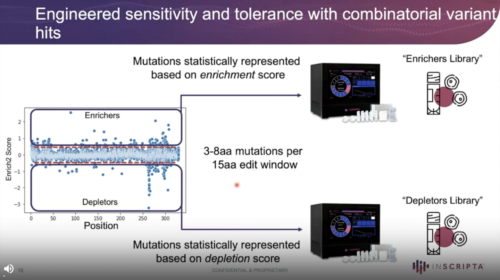Investigating antimicrobial mechanisms-of-action using automated genome-wide and gene-specific editing
Members of the cinnamic acid and stilbenoid chemical families are common intermediates in the production of important bioindustrial compounds. However, these molecules can inhibit microbial growth and stifle production capabilities. Since the underlying mechanism of action is unclear, ways to ameliorate inhibition can be time consuming and difficult to identify. Here we use automated, high-throughput, precise and trackable genome editing to probe biological responses to p‑coumaric acid and resveratrol. Using a combination of genome-wide and gene-specific edits, we identify genes and individual residues that show enrichment or depletion in the presence of p‑coumaric acid or resveratrol. This method represents a new approach to small molecule mechanisms-of-action discovery, providing target leads that can subsequently be used to engineer tolerance or enhance sensitivity to antimicrobial compounds.

